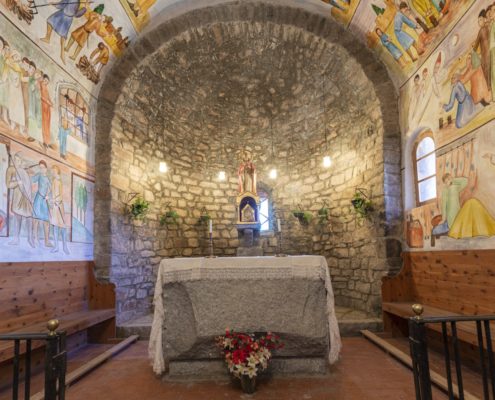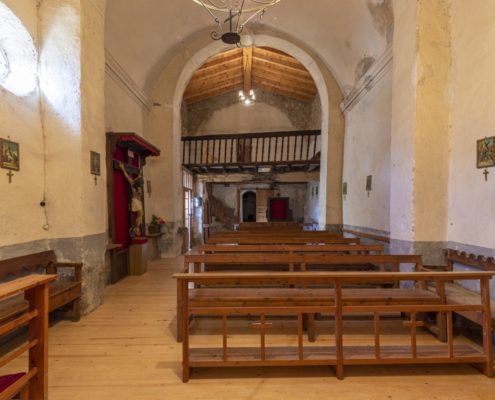Description
It is a building in which both the nave and the apse share the same roof for having been raised, as can be seen in the different facing and the slate line, evidence of the original slab.
The apse has a façade divided into five locks by four pilasters, between which the frieze has pairs of blind cobblestone arches. This apse dates the building to the 11th century. The only window with a double sash opens in the central aisle.
The entrance door, located at noon, has three degraded archivolts, made of granite voussoirs. To the west rises the modern bell tower.
The nave is covered by a vault of a fairly flattened semicircular arch, which rests on walls reinforced with two toral arches. It retains the plastering of the walls except in the apse. The interior of the presbyteral arch is decorated with modern paintings that reproduce the life and martyrdom of Sant Fructuós, also called Sant Fruitós, bishop of Tarragona from the 3rd century AD and one of the oldest documented martyrs in the Iberian Peninsula.
The exterior of the arch is decorated with images of paradise, Adam and Eve, and groups of local and exotic animals.
The wooden beams that support the choir are very remarkable elements, they have sculpted heads reproducing human faces, except for that of a cat (or feline). By their type we could say that they are old. Another interesting element is one of the fonts of the holy water that has a carved face on its front.
The baptismal font is a monolithic piece of granite, hemispherical in shape with a recent wooden lid; it is inside a niche protected by two carved wooden doors.



















